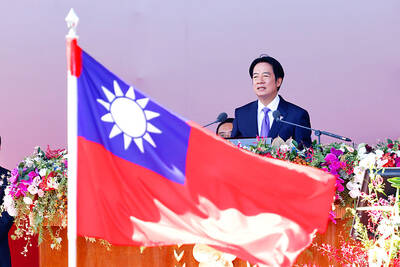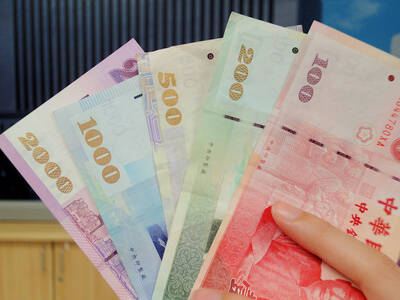At least two people were killed and nine wounded yesterday in gunbattles between Ukrainian special forces and pro-Kremlin militias that threatened to scuttle the first international talks on the worst East-West crisis since the Cold War.
The clashes across the ex-Soviet state’s separatists eastern rust belt broke out a day after masked gunmen stormed a series of police and security service buildings in coordinated raids that Kiev blamed on the “provocative activities of Russian special services.”
The heavily Russified region has been riven by unrest since a team of Western-backed leaders rose to power in February on the back of bloody protests against the old regime’s decision to reject an EU alliance and look for future assistance from the Kremlin.
Russia has since massed about 40,000 soldiers along Ukraine’s eastern frontier and threatened to halt its neighbor’s gas supplies over unpaid bills — a cutoff that would impact at least 18 EU nations and threaten further retaliation against the Kremlin.
Saturday’s attacks were especially unsettling for both Kiev and Western leaders because of their remarkable similarity to events leading up to Russia’s annexation of Ukraine’s Crimean Peninsula last month.
The balaclava-clad gunmen were armed with special-issue assault rifles and scopes most often used by nations’ crack security troops.
Many wore unmarked camouflage uniforms similar to those seen on the highly trained units that seized the Black Sea peninsula early last month. They also moved with military precision and cohesion.
However, Russia denied any involvement, and it sternly warned Kiev late on Saturday that the use of force against pro-Russian protesters could ruin the chances of the two sides sitting down for US-EU mediated talks in Geneva on Thursday.
Ukrainian Minister of the Interior Arsen Avakov announced the launch of an “anti-terrorist” operation in the eastern Donetsk region early yesterday morning.
Crack units from Ukraine’s SBU security service first attacked an occupied police station in the eastern city of Slavyansk that was seized by about 20 militants on Saturday.
However, Avakov said that his troops had to “regroup” after meeting stiff resistance and suffering casualties.
Russia’s state-run RIA Novosti news agency cited one local protester as saying that a civilian had also been killed and two others injured.
The local administration separately reported a series of heavy clashes on a highway linking Slavyansk with the region’s capital Donetsk to the south.
The Donetsk administration said one person was killed and four wounded in an “ongoing armed standoff” on a stretch of the road connecting Slavyansk and the town of Artemivsk.
Meanwhile, Slavyansk residents reported a run on stores and general panic among locals in the poor mining town of 100,000 people.
The US Department of State said US Secretary of State John Kerry phoned Russian Minister of Foreign Affairs Sergei Lavrov on Saturday to make “clear that if Russia did not take steps to de-escalate in eastern Ukraine and move its troops back from Ukraine’s border, there would be additional consequences.”

People can preregister to receive their NT$10,000 (US$325) cash distributed from the central government on Nov. 5 after President William Lai (賴清德) yesterday signed the Special Budget for Strengthening Economic, Social and National Security Resilience, the Executive Yuan told a news conference last night. The special budget, passed by the Legislative Yuan on Friday last week with a cash handout budget of NT$236 billion, was officially submitted to the Executive Yuan and the Presidential Office yesterday afternoon. People can register through the official Web site at https://10000.gov.tw to have the funds deposited into their bank accounts, withdraw the funds at automated teller

PEACE AND STABILITY: Maintaining the cross-strait ‘status quo’ has long been the government’s position, the Ministry of Foreign Affairs said Taiwan is committed to maintaining the cross-strait “status quo” and seeks no escalation of tensions, the Ministry of Foreign Affairs (MOFA) said yesterday, rebutting a Time magazine opinion piece that described President William Lai (賴清德) as a “reckless leader.” The article, titled “The US Must Beware of Taiwan’s Reckless Leader,” was written by Lyle Goldstein, director of the Asia Program at the Washington-based Defense Priorities think tank. Goldstein wrote that Taiwan is “the world’s most dangerous flashpoint” amid ongoing conflicts in the Middle East and Russia’s invasion of Ukraine. He said that the situation in the Taiwan Strait has become less stable

CONCESSION: A Shin Kong official said that the firm was ‘willing to contribute’ to the nation, as the move would enable Nvidia Crop to build its headquarters in Taiwan Shin Kong Life Insurance Co (新光人壽) yesterday said it would relinquish land-use rights, or known as surface rights, for two plots in Taipei’s Beitou District (北投), paving the way for Nvidia Corp to expand its office footprint in Taiwan. The insurer said it made the decision “in the interest of the nation’s greater good” and would not seek compensation from taxpayers for potential future losses, calling the move a gesture to resolve a months-long impasse among the insurer, the Taipei City Government and the US chip giant. “The decision was made on the condition that the Taipei City Government reimburses the related

FRESH LOOK: A committee would gather expert and public input on the themes and visual motifs that would appear on the notes, the central bank governor said The central bank has launched a comprehensive redesign of New Taiwan dollar banknotes to enhance anti-counterfeiting measures, improve accessibility and align the bills with global sustainability standards, Governor Yang Chin-long (楊金龍) told a meeting of the legislature’s Finance Committee yesterday. The overhaul would affect all five denominations — NT$100, NT$200, NT$500, NT$1,000 and NT$2,000 notes — but not coins, Yang said. It would be the first major update to the banknotes in 24 years, as the current series, introduced in 2001, has remained in circulation amid rapid advances in printing technology and security standards. “Updating the notes is essential to safeguard the integrity